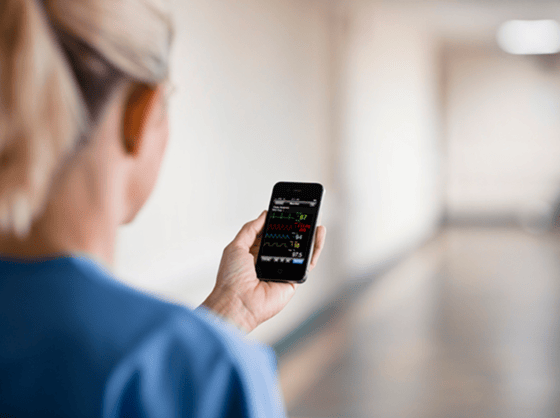Keeping Track: Monitoring Patients with Wireless Cardiac Monitoring Device
Hospitals have long grappled with "alarm fatigue," a condition in which busy workers become habituated to the incessant noise emitted by cardiac monitoring devices. While less than 10% of the warnings are immediately clinically relevant, critical warning indications can be missed in the midst of the clamor of annoying pings.

What is Cardiac Monitoring?
Monitoring the status of the heart becomes a key component of healthcare for individuals diagnosed with an arrhythmia, particularly those who have pacemakers and implantable cardioverter defibrillators. Healthcare staff must ensure that these devices are functioning effectively and that cardiac rhythm is adequately managed, which is where cardiac monitoring comes into play.
The cardiac monitor is a device that shows the heart's electrical activity as a wave pattern on a monitor. Normally it’s measured through a bedside monitor, telemetry, and other cardiac monitors as means of communicating information from a patient's implantable rhythm management device directly to a physician's office.
In this type of monitoring, usually, a chest cable is placed on the patient and is then hooked to a box that transmits data to a room somewhere in the hospital where technicians can sit and watch the monitors, and call the units to tell bedside staff of the patient’s status.
Why is Cardiac Monitoring Important?
Remote cardiac monitoring devices play an important role in ensuring that patients with implantable cardiac devices receive the best possible care. In many cases, these devices are essential for helping to maintain a patient's heart rhythm and avoiding potentially dangerous episodes. By monitoring a patient's implantable device, healthcare professionals can detect any changes in cardiac rhythm or device function.
This technology not only eliminates the need for clinicians to be present at the bedside, but it also provides critical feedback on patient status and management. In addition, remote monitoring allows healthcare facilities to share data with each other in a collaborative effort to improve patient care.
Furthermore, research has demonstrated considerable advantages related to overall care quality. Among the major findings are:
- Hospitalizations related to atrial arrhythmia were reduced by more than 65%.
- The time required to detect clinical events has been cut by nearly 80%.
- Patients with remote monitoring devices have a probability of survival that is more than 2x greater than those without
- Allows patients to continue with their daily lives due to having a wireless and remote cardiac monitoring device
Cutting the Cord: Wireless Cardiac Monitoring
There are different types of arrhythmias and depending on the facilities that you have and aspects of your facilities that need improvement in detecting a certain set of vitals will determine what cardiac device you would need for monitoring. But if you’re looking for a wireless patient monitoring system that includes cardiac monitoring, ViSi Mobile might be a good fit for you.
ViSi Mobile connects clinicians to their patients, keeping them informed of any changes in their condition, whether on the ward or in transit. The device includes sensors that are placed on the patient's body without impeding movement. A wearable platform that wirelessly transmits data to clinicians while continuously monitoring all patient vital signs, including pulse rate, heart rate (3 and 5 ECG leads), SpO2, cNIBP (continuous non-invasive blood pressure), MAP, respiration rate, skin temperature, posture, and life-threatening arrhythmias (AFIB, AFIB RVR, VFIB, and asystole).
Much like any other technology, ViSi has its limitations. It only alerts for a limited number of arrhythmias, including ventricular tachycardia (V-Tach), ventricular fibrillation (V-fib), asystole, and atrial fibrillation. However, ViSi offers much more than simply cardiac monitoring, as noted before, this device monitors other important information on patient vital signs and health status.
The FDA-approved device is designed to improve clinician time efficiency in general care establishments while allowing nurses and other healthcare workers to cut down on the responsibilities that contribute to burnout. Furthermore, it enhances patient safety by recognizing patient deterioration using machine learning from millions of hours of patient data while minimizing alarm burden and optimizing clinical productivity.

